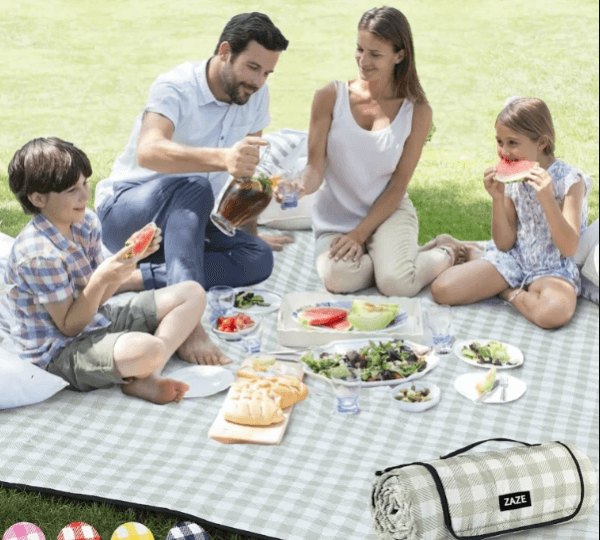If you’re looking to rule the Amazon marketplace, controlling your product images is unavoidable. Customers don’t read every line of your description—they scan. And what do they scan first? Photos.
Why Secondary Images Matter
In an online world where customers can’t touch and feel the product, images are all that remain. From enhancing click-through rates (CTR) to driving conversion rates (CVR), your product images hold the key to impacting each step of the buying process.
As per research, 60% of web shoppers place greater value on product images over product descriptions. A further study by eBay indicated that listings featuring higher-quality photographs enjoyed a 5% to 20% higher conversion rate compared to listings without. On Amazon, where consumers compare competing products side-by-side, an excellent image can be the deciding factor. A well-organized image gallery can make you stand out and enhance both CTR and CVR.
Let’s take a look at three of the most influential types of images that all Amazon sellers need to utilize: lifestyle images, iconographic images, and comparison images. Each plays a specific role in moving potential buyers from browse to buy.
Lifestyle Photos: Establishing Emotional Connection
Lifestyle photos place your product being used in daily contexts. Rather than having a yoga mat rolled up, say, a lifestyle photo would be someone practicing yoga on it outside. These pictures work because they’re selling a feeling, not a product.
Lifestyle shots induce emotional buying. They allow customers to envision themselves using the product, and therefore are able to emotionally commit to the transaction. A photo of an individual using a water bottle with confidence during a workout session communicates more than it being hydrated—it communicates health, energy, and motivation.
Successful lifestyle shots include:
Use actual people that are representative of your actual customer base.

Shoot on location in actual, everyday environments such as homes, gyms, or parks.

Ensure the setting reflects the purpose of the product.
Create positive emotions like comfort, happiness, or satisfaction.
Done properly, lifestyle photos not only create emotional connection but also trust and credibility with your brand.
Iconographic Images: Delivering Clear and Instant Information
Iconographic images are photos enhanced with minimal text and icons that communicate a product’s features, benefits, or technical specs at a glance. They are designed for shoppers who skim listings and need instant clarity.
Why do iconographic images work so well? Because they simplify complex information. For instance, if your product is “BPA-free,” “100% organic,” or “Made in the USA,” it’s more effective to show that visually with clean icons than to bury it in a paragraph of text. This is especially important on mobile devices, where over 65% of Amazon traffic comes from.
A good iconographic image layout might include:
A clean photo of the product as the base
3 to 5 concise icons denoting features (e.g., water-resistant, eco-friendly, fast-charging)
Short, readable text captions
Consistency is important. Use uniform design, colors, and font style in all iconographic images. Be consistent with your brand color scheme, and ensure icons are intuitive. For instance, a leaf for green, a lightning bolt for quick-charging, or a shield for ruggedness.
Comparison Images: Reinforcing Value and Differentiation
Comparison images showcase how your product performs against alternatives—either through side-by-side competitor comparisons or before-and-after results. These visuals eliminate doubts and boost the customer’s confidence in their decision to buy.
There are two major types of comparison images:
1.Before and After: Particularly useful for beauty, cleaning, or fitness products. For example, a skincare serum showing visible improvement after four weeks helps set realistic expectations.
2.You vs. Competitors: This format shows what makes your product better. For example, a charging cable might compare fast-charging capability, safety, and durability versus cheap, unreliable options.
Best practices for comparison images include:
Use clean, symmetrical layouts
Include labels like “Ours” vs. “Theirs”
Highlight specific advantages (e.g., battery life, material strength, functionality)
These images are excellent for reinforcing your unique selling proposition and addressing any last-minute buyer hesitation.
Structuring an Effective Image Set
Every image slot on Amazon serves a purpose. To maximize both click-through and conversion rates, make sure your gallery is strategically structured:
Main Image: High-quality, clear, white background. Designed to win the click.
Lifestyle Image: Shows the product in context, creating an emotional bond.
Iconographic Image: Highlights key features with clarity.
Comparison Image: Conveys superiority over competitors or usage improvement.
Close-Up Image: Displays product texture, material, or components.
Proven Impact: The Data Doesn’t Lie
The impact of well-optimized images is not just theory—it’s backed by data. Sellers who revamp their image galleries with these types often see significant improvements:
CTR boost: 25% increase with optimized main images
Conversion increase: 35% improvement with targeted secondary images
Reduced returns: Clear visuals lead to better-informed purchases
Case Study: A supplement brand updated its gallery to include lifestyle, iconographic, and comparison images. In just 30 days:
Conversion rate increased from 12% to 17%
Sessions rose by 20%
Best Seller Rank (BSR) improved by 8 positions
These improvements show how the right visual strategy can drive tangible business results.
Packaging Image: Sets expectations for what’s in the box.
Instructional/Infographic: Demonstrates how to use the product or share certifications.
By filling all seven slots thoughtfully, you create a complete visual narrative that moves customers closer to the buy button.
Common Pitfalls to Avoid
Even with good intentions, many sellers make mistakes when it comes to product images. Avoid these errors:
Using generic stock photos that feel staged
Overloading images with too much text
Inconsistent fonts, colors, or design elements
Neglecting mobile optimization
Leaving image slots empty
Every missed opportunity to visually engage a shopper is a missed sale.
Don’t Have These Images Yet? Here’s What to Do
Producing high-converting images requires more than a good camera. You require guidance, professional design, and a strategy specific to Amazon’s special environment. If you cannot do it in-house, hire experts.
That’s where agencies like EcomAscendX come in. With over 5 years of e-commerce experience and optimization work on over 400+ Amazon listings, their team offers:
Lifestyle photography that resonates with your audience
Clean, on-brand iconographic design
Persuasive comparison visuals crafted for conversions
To get started, simply send your product info to info@ecomascendx.com and let the pros handle the rest.
Final Thoughts: Your Images Are Your Silent Sales Team
In a market as competitive as Amazon, solid images aren’t a nicety—they’re a requirement. Your combination of lifestyle, iconographic, and comparison images doesn’t only enhance your listing; it makes the buyer feel assured, educated, and motivated to purchase.
So, invest the time or partner with the right experts to upgrade your images. Tell a visual story. Make your product stand out. And most importantly—turn browsers into buyers.
Because on Amazon, your product images aren’t just decoration. They’re your silent salespeople. Make sure they’re working for you.

